Best swimming watches to help you improve in 2025
Our expert testers take a look at the best swimming watches on the market right now.

Keen to maximise your time in pool or open water? Then analysing your training with one of the best swimming watches available is a good shout. Here are some to consider…
Whether you’re training in the pool, in the open water or both, a swimming watch is a good investment to make sure you are getting the most out of your time and effort.
Which one you go for will differ depending on what kind of training you’re doing, the metrics you’re looking for and how much you can afford to spend.
Best watches for swimming at a glance
Best watch for swimming: Garmin Fenix 6X Pro | Buy now from Amazon
Best watch for multisport: Suunto Race | Buy now from Suunto
Best value swim watch: Garmin Swim 2 | Buy now from Amazon
Best swimming watches in 2025
Garmin Instinct 3

220 Triathlon Verdict
Perhaps not the highest spec, but we love the comfort, fun, and reliability of this watch. Score: 85%
Pros
- Elevated, clear screen
- Good range of features
- Retro style
Cons
- Not as high mapping spec as others
The Instinct 3 feels like reuniting with an old friend—only better. Available in two sizes (45mm & 50mm) and four colors, this third iteration of a classic has a standout upgrade in the vibrant AMOLED screen, replacing the outdated split display for sharper clarity.
A built-in flashlight with a strobe adds convenience and safety. Packed with multi-sport modes and health tracking, it meets most triathletes’ needs, providing tracking for both pool and open-water swimming. It also tracks myriad other watersports from SUP to waterskiing.
Chunky, retro, and refreshingly modern—great value for swim lovers and adventure seekers alike!
For more info on the Garmin Instinct 3, check out our longer review in our best triathlon smartwatches article.
| Price: | £389.99 |
| Weight: | 53g |
| Display size: | 45mm or 50mm AMOLED |
| Battery life: | Up to 18 days in smartwatch mode and 32h GPS mode |
Polar Vantage M3

220 Triathlon Verdict
Similar to its siblings but much more affordable, with top features and swimming acitivity functionalities. Score: 86%
Pros
- Crisp screen and top features
- Competitive price
- Identical software to Polar’s pricier models
Cons
- Polar flow app needs upgrade
- Battery life could be better
The Polar Vantage M3 packs in the high-end features from its pricier siblings, the Vantage V3 and Grit X2 Pro, at a fraction of the cost.
While battery life (30 vs. 43 hours) and build quality take a hit, its lighter 53g frame is a plus. The 1.28″ AMOLED display is crisp, and upgrades include dual-band GPS and a blood oxygen sensor.
With solid multisport tracking for triathletes, the M3 also has pool swim tracking and open-water swimming activity options.
Read our full Polar Vantage M3 review for more. JW
| Price: | £349 / $399 |
| Weight: | 53g |
| Display size: | 1.28inch AMOLED |
| Battery life: | 30 hours of training time (claimed) |
Best value swim watch
Garmin Swim 2
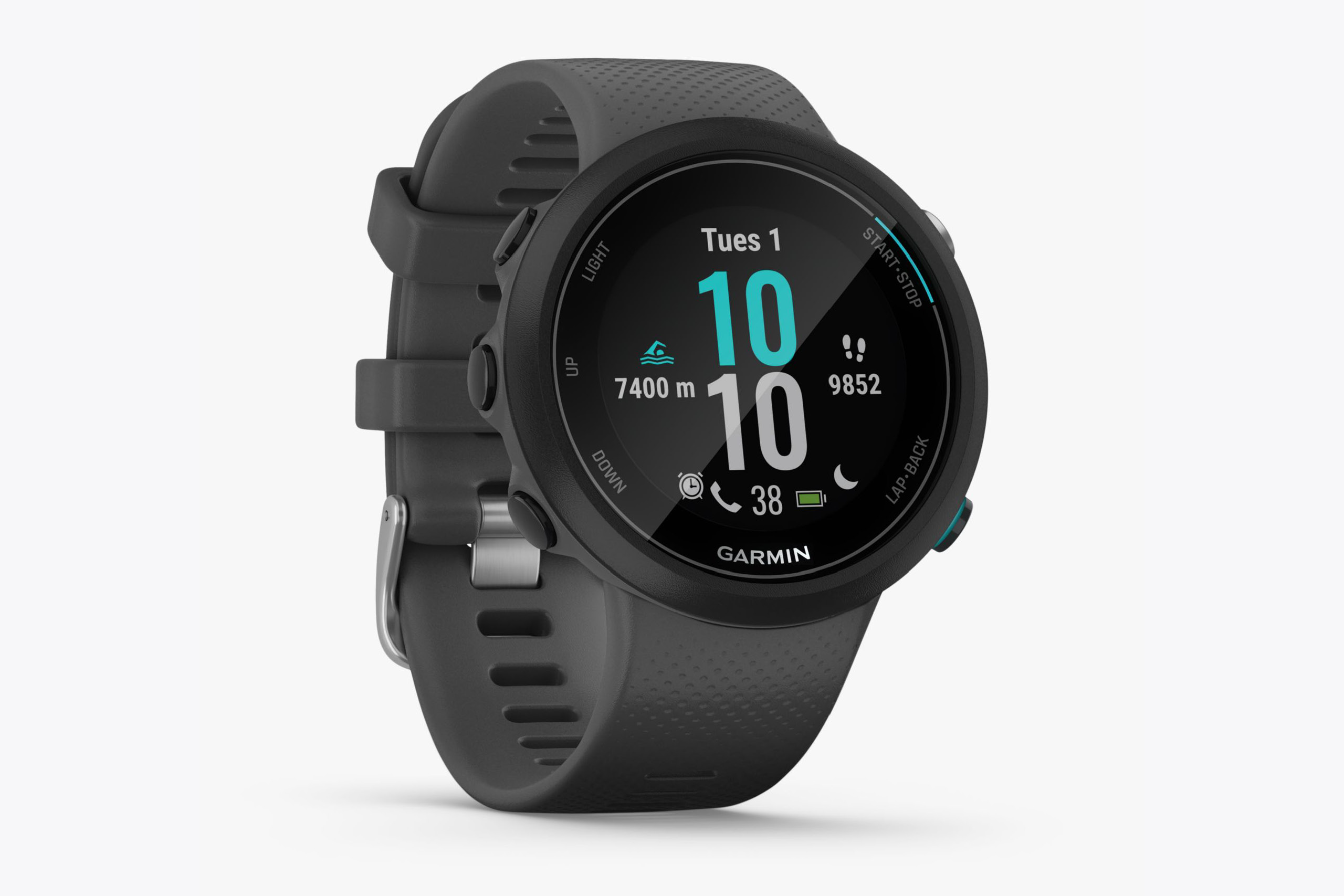
220 Triathlon Verdict
A significant improvement on the original, the Swim 2 purely focusses on swimming with great swim functions. Score: 84%
Pros
- Logs different swim stats
- Post-swim analysis on Garmin app
- Affordable price-tag
Cons
- Not as versatile as multisport watches
Wanting to keep things simple and buy a watch that just focusses on your swimming? Then the Garmin Swim 2 could be the one to go for.
This smart watch has all the features you could possibly need for both pool and open water, with wrist-based heart rate and both a pool and open-water swim mode.
It will log lengths, distance, pace, stroke count, stroke type and SWOLF in the pool and, with built-in GPS, logs distance, pace, stroke count, SWOLF, stroke rate and stroke distance in open water.
It also allows you access post-swim analysis on the excellent Garmin Connect platform. The watch will also sync to your phone to allow message alerts.
For more info, read our full Garmin Swim 2 review.
| Price: | £219 / $249.99 |
| Weight: | 36g |
| Display size: | 26.3mm |
| Battery life: | Up to 7 days in smartwatch mode and 13 hours in GPS mode |
Best watch for multisport
Suunto Race
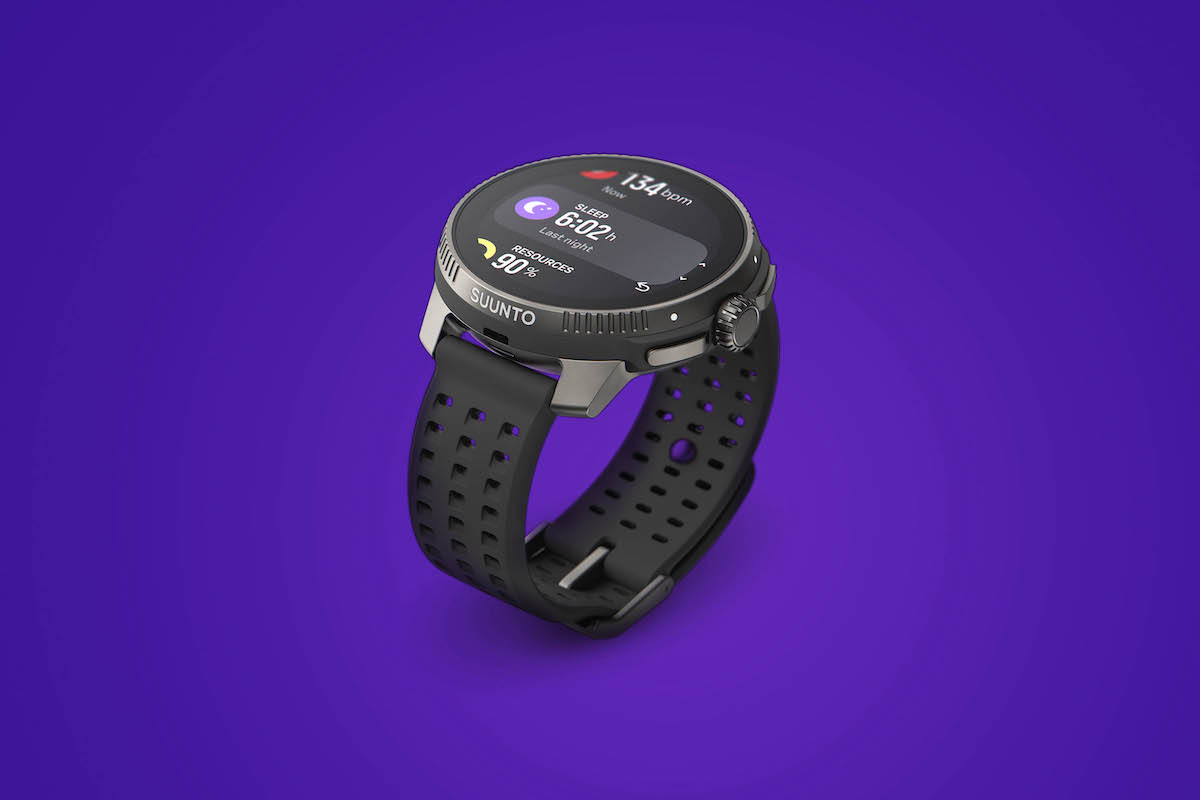
220 Triathlon Verdict
This is a superb watch at a great price point. Score: 88%
Pros
- Great battery life
- Huge range of features
- Accurate GPS and biometrics
Cons
- Can only pair to one sensor at a time
The Suunto Race has a lot going for it and is arguably the brand’s best watch to date.
It’s incredibly usable, thanks to the combination of a touchscreen and three buttons, and has an impressive feature list including swimming.
You can use Suunto Race for swimming in pools or open water. Metrics include distance; stroke rate, count and type; automatic intervals; and much more.
The feature list also includes heart rate variability, a useful metric that also steers many other training features such as sleep quality, training stress score and training load.
Battery life is impressive at 40 hours in GPS mode.
Read our full Suunto Race review for more.
| Price: | £389 / $449 (steel version), £479 / $549 (titanium version) |
| Weight: | 83g |
| Display size: | 36.3mm |
| Battery life: | Up to 26 days in time mode and starts at 40 hours in GPS mode |
Polar Vantage V3

220 Triathlon Verdict
Watch with clear and crisp screen, packed full of features and biometric tracking. Score: 85%
Pros
- Recognises different swim styles
- Impressive GPS accuracy
- Clear screen and biometric tracking
Cons
- High price-tag
Polar’s AMOLED screen is perfect for clarity in the swim, especially outdoors when it’s dark and grey.
As you’d expect for a £500 training watch, it’s packed with all the sports modes you need including pool and open-water swimming.
Positively, it recognises swim styles beyond front crawl, which will be a boon for triathletes who favour breaststroke, though this doesn’t transcend to open water. That said, GPS is impressive when swimming outdoors.
You can also measure your skin temperature, which is useful in the heat; gauge sleep; see strain of workout; plan your fuelling; and a whole myriad other useful features.
| Price: | £519 / $599.95 |
| Weight: | 57g |
| Display size: | 35.3mm |
| Battery life: | Up to 12 days in standard mode and 61 hours in GPS training mode |
Coros Pace 3
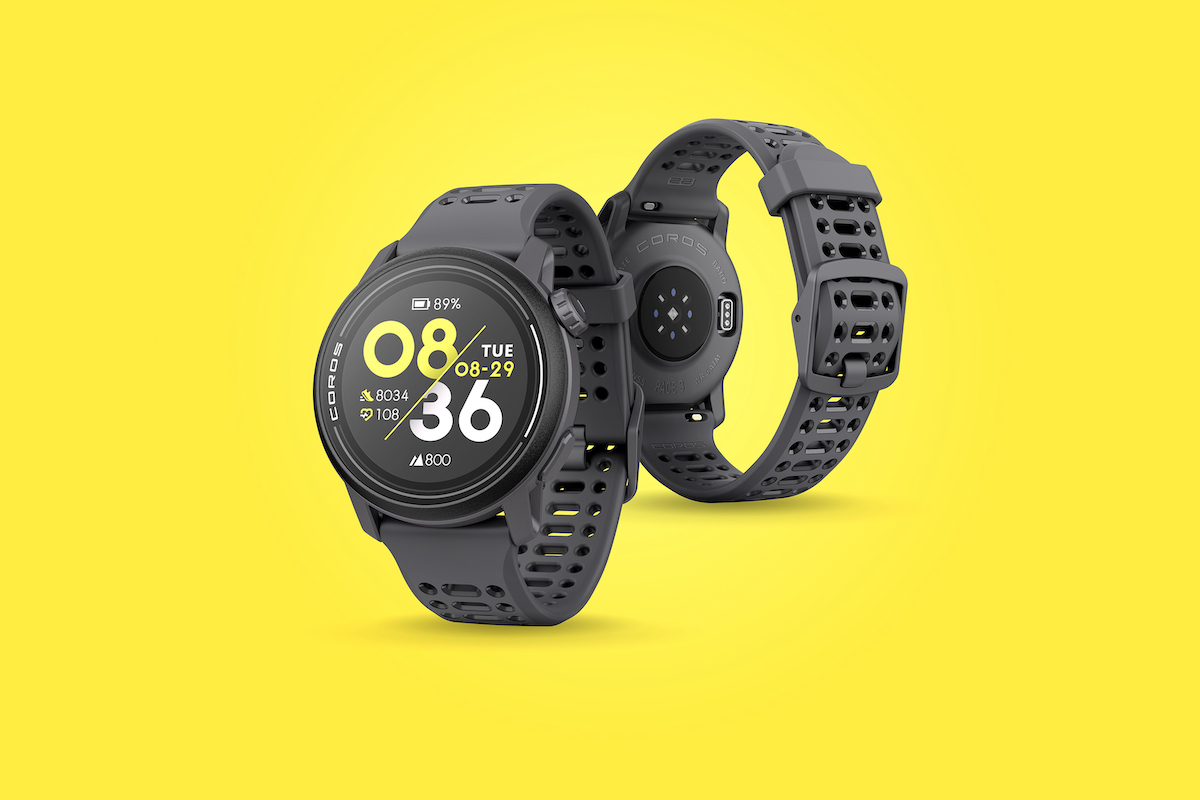
220 Triathlon Verdict
Swift GPS, huge battery and a decent price make this another fine Coros. Score : 86%
Pros
- Swim stats tracking
- Great battery and GPS
- Long battery life
Cons
- Few cons in a packed market
The third iteration of the Coros Pace range is impressive and good news for athletes that don’t want to spend hundreds on their kit.
Version three retains the same single button and dial, but also adds a touchscreen, which is a nice touch.
The 30g weight and small form factor (1.2” display) ensures it’s hardly noticeable on the wrist, too.
The LCD screen is decent enough, while a battery life of 38 hours in GPS mode or 30 days in standard mode is pretty damn impressive.
There are 20 activity profiles to choose from, including swimming, where they provide a stroke rate data and a SWOLF score, while training plans can be uploaded from the brand’s website.
Cleverly, it detects four stroke types in pool mode: freestyle, breaststroke, backstroke and butterfly.
Read our full Coros Pace 3 review for more.
| Price: | £219 / $229 |
| Weight: | 30g |
| Display size: | 30.48mm |
| Battery life: | Up to 30 days in standard mode and 38 hours in GPS mode |
Wahoo Elemnt Rival
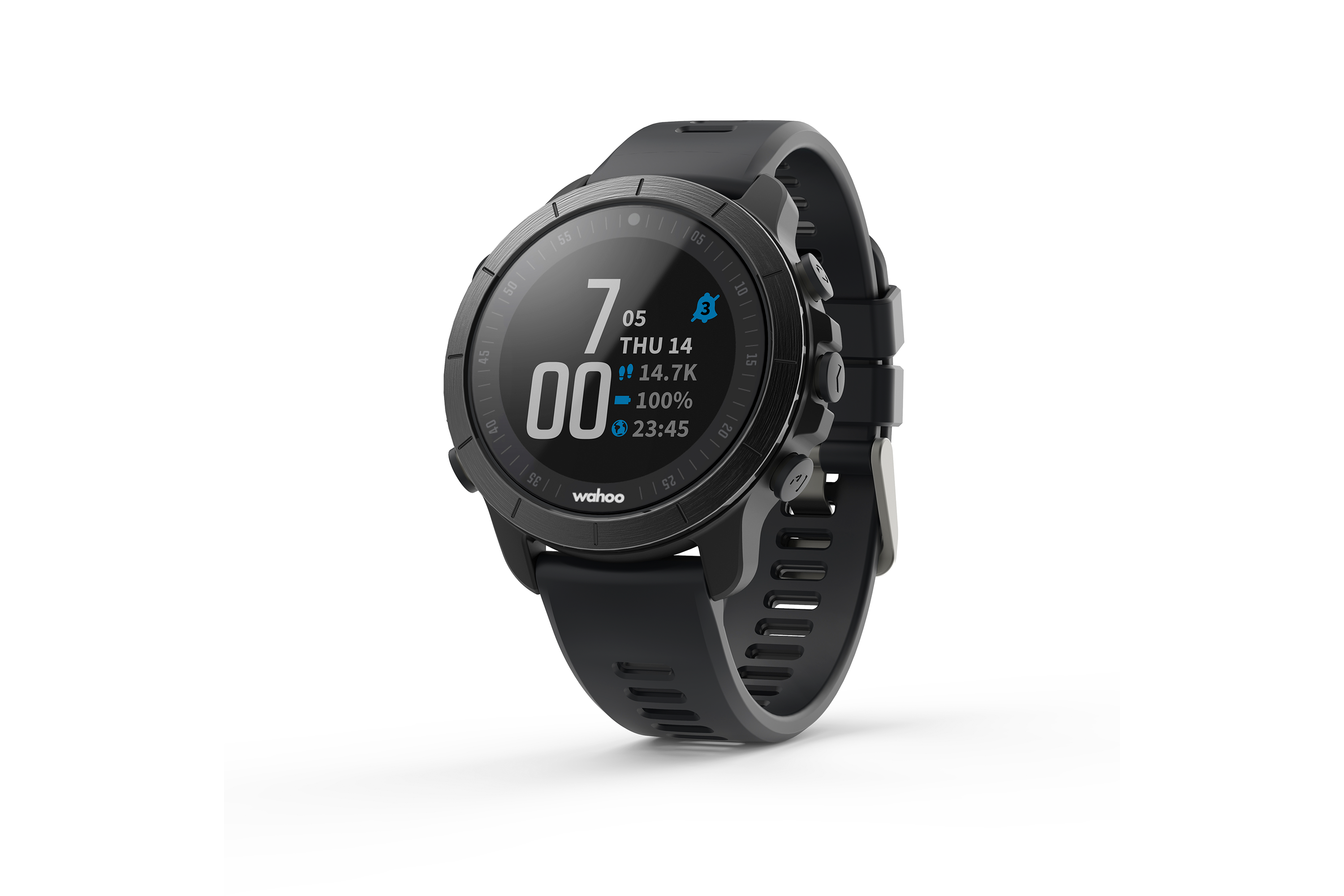
220 Triathlon Verdict
Useable multisport watch, though lacks features expected for the price. Score : 82%
Pros
- Touchless transition
- Training Peaks integration
Cons
- Slightly outdated and GPS slow
Designed to perform with Kickr and Elemnt bike computer integration, the Rival is a multisport watch which also includes a triathlon, open-water and pool swim mode.
Of most interest if investing in this option though, for most buyers, will be the integration with other Wahoo products and platforms.
The ‘planned workouts’ feature also includes TrainingPeaks integration as well as 12 pre-built Wahoo Sports Science workouts.
The week’s workouts will automatically sync, allowing you to manage swimming, cycling, and running workouts. Good for time-pushed triathletes!
See our full verdict in our Wahoo Elemnt Rival review.
| Price: | $379 / £349.99 |
| Weight: | 53g |
| Display size: | 30.4mm |
| Battery life: | Up to 14 days in smartwatch mode and 24 hours in GPS mode |
Best watch for swimming
Garmin Fenix 6X Pro
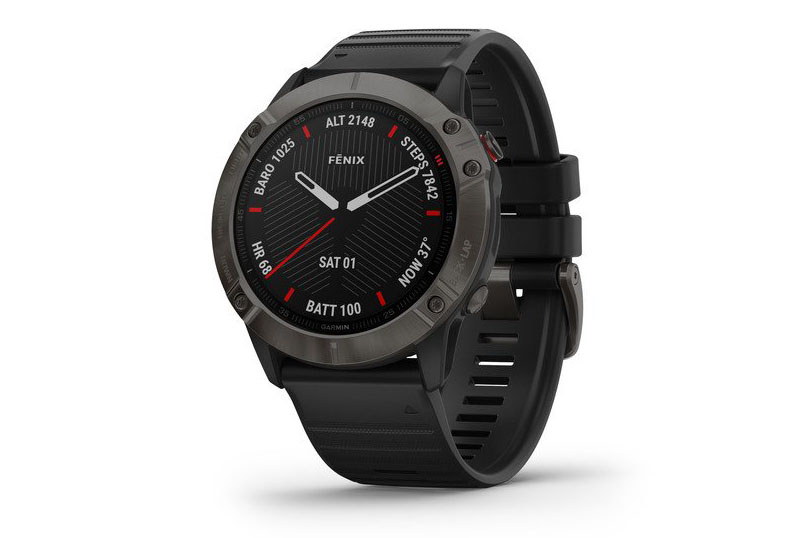
220 Triathlon Verdict
Arguably the rating should be even higher, but you can’t ignore this is one hefty outlay. Score: 89%
Pros
- Durable and high-quality build
- Industry-leading Garmin software
Cons
- Bulky for smaller wrists
- High price-tag
The release earlier this year of the top-end Garmin Fenix 7 range means there are some good deals to be had on the previous Fenix 6 models.
With the 6X Pro you get a rugged but professional-looking watch with more features than we can possibly list here, including a heart-rate sensor with Pulse Ox capability, a colour screen including maps for running/cycling and a large, sunlight-readable screen.
Multisport logging allows you to monitor triathlon, duathlon and swimrun, while there are standalone pool and open-water swim activity functions, as well with all the stats and info you would expect from a premium multisport watch.
Swim-specific metrics include distance, pace, stroke count/rate, lengths and swim efficiency (SWOLF), plus drill logging, pool swim workouts and pacing alerts for pool swimming.
| Price: | £649.99 / $699 |
| Weight: | 93g |
| Display size: | 36.54mm |
| Battery life: | Up to 21 days in smartwatch mode and 60 hours in GPS mode |
Polar Grit X
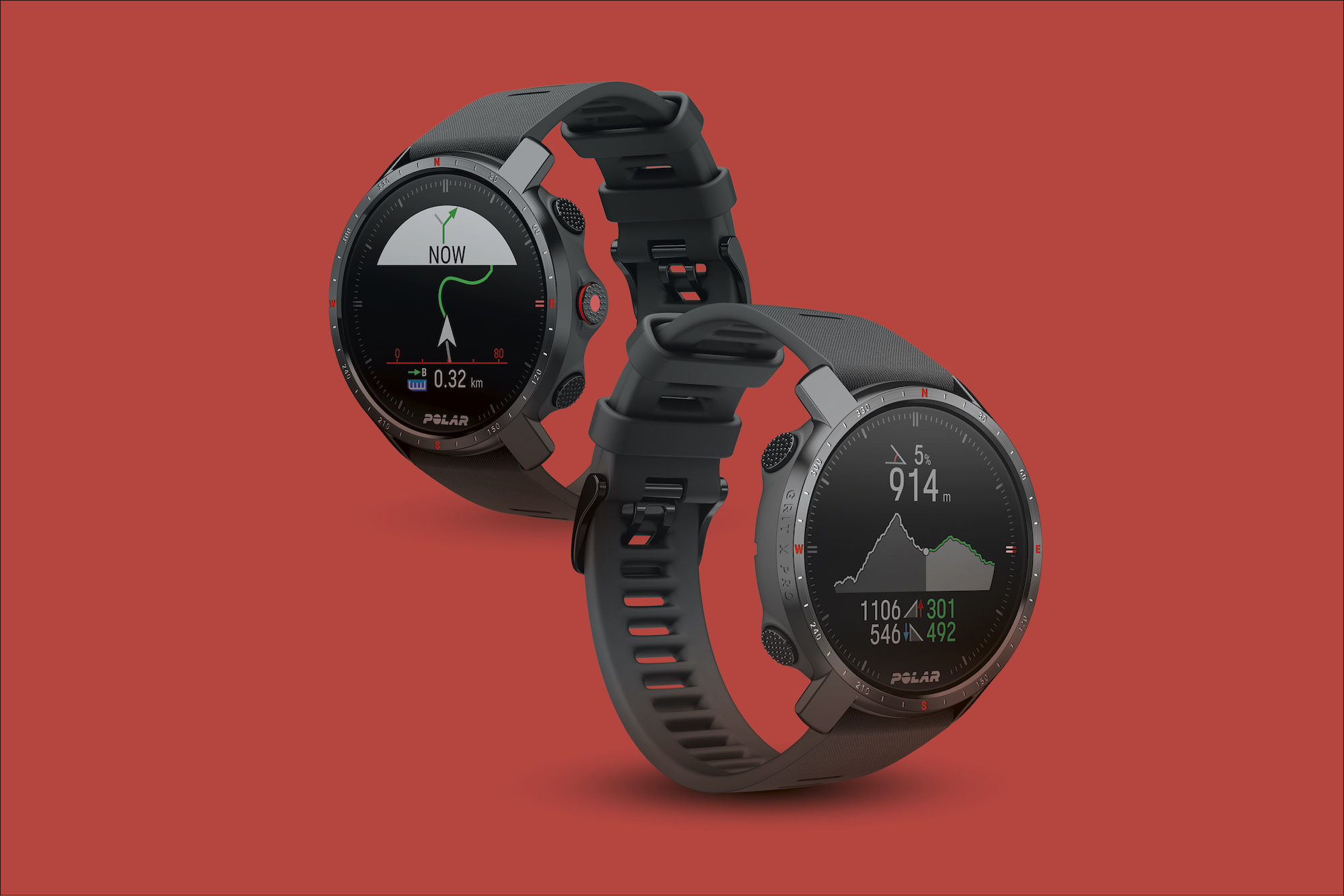
220 Triathlon Verdict
A fine watch, albeit one lacking in upgrade inspiration. Score : 79%
Pros
- Full swim metrics
- Great battery life
Cons
- No new major upgrades from other Polar models
Described by the manufacturer as the ‘Swiss army knife of training aids’ this watch has an impressive spec list.
It’s designed for multisport, so you get full bike and run and triathlon functions, but the swimming metrics detect everything from heart rate to distance, pace, stroke and rest time.
While the battery life of up to 40 hours means you can get all your workouts in without having to worry about losing power.
For Strava fans, it has an ‘upcoming segment’ function, which will help keep you motivated on the bike and run!
Read our full Polar Grit X Pro review for more information and our verdict.
| Price: | £369 / $429.95 |
| Weight: | 64g |
| Display size: | 30.48mm |
| Battery life: | Up to 7 days in smartwatch mode and 40 hours in GPS mode |
How we tested
All of the watches featured here have been reviewed by 220 Triathlon‘s gear testing team.
For this list of the best swimming watches, that includes open-water swim coach and 220 editor Helen Webster, plus experienced gear testers Matt Baird and James Witts.
Between them, they have over 40 years of experience testing swimming and triathlon gear.
Before getting a score and appearing on this list, each watch has gone through a series of test swims both in the pool and in open-water.
Each watch is tested against a range of criteria, which you can see explained in detail in the next section of this article.
What to look for when buying a swimming watch
Buying a watch for swimming can really help your training and racing. They allow you to track your time in water and at the most basic level (for pool use) will count your lengths for you.
For pool training alone, a basic watch will count the number of lengths for you (a godsend if you struggle to keep count as you swim!), as well as the time swum and your splits, such as time per length.
The best swimming watches will feature a series of metrics for the pool and then, once you get into open water functionality, adding GPS can open up a whole world of information.
Advanced features will allow you to count drills, will recognise and log different swim strokes (based on the type of movement your arms are doing) and allow you to group your swim sets.
Here are a few things to look out for.
Waterproof rating

It goes without saying your chosen watch needs to be waterproof. Many watches will have a rating that allows them to be splashed or worn in the shower, for example, but for swimming and extended periods in the water you’ll want something a little more robust.
ATM ratings are usually used and refer to the number of metres under water the watch can be used.
For example, 50 ATM means you can use the watch up to five metres underwater (165 feet), so it would be suitable for swimming but not snorkelling or diving.
We would generally look for at least 10 ATM, which is recommended for extended swims plus diving into water, or 20 ATM, which can withstand impact in water, too (handy if you do a lot of dive starts and/or are a surfer).
You will also want to check that the buttons on the watch can be safely used underwater and also whether the brand has any recommendations around salt water – for example Garmin recommend rinsing their watches in fresh water after use in the sea.
Activity tracking

Think about what information you want (and will use) when choosing your swimming watch.
If you only want to know your number of laps in the pool, then you can opt for a simpler (usually less expensive) watch.
Most of the multisport watches that include a pool swimming setting will also track many other metrics, though, such as time per length/lap, number of strokes, pace and SWOLF score.
In open water, you can set swimming watches to record your time and pace, and many will also give you a lap cue (such as vibrating every 500m).
GPS

Once you get into open water, you will want a watch with a separate ‘open-water’ swimming function as opposed to pool swimming.
These use the GPS functionality on your watch to measure your speed and also to give you metrics.
While a pool watch will recognise when you turn at the end of each length, when outdoors a swimming watch uses GPS to track your speed.
The plus side is you can really measure your pace, which is helpful as conditions in open water can differ. Plus, wearing a wetsuit will change your swim speed.
It’s good to know your open-water pace before entering an event as pool pacing can be deceptive, as we gain speed from a good push-off at each end of the pool!
For the swim geeks amongst us, GPS also allows us to ‘play back’ our swims and look at maps, as well as 100m splits, to see how we performed in each swim.
Check the watch you’re buying has GPS that’s able to track you in your chosen water, though.
Multi-band GPS gives a better chance, especially if you tend to swim in areas with sketchy GPS such as some more remote lakes and/or quarry venues.
Top image credit: Oleg Breslavtsev/Getty Images






